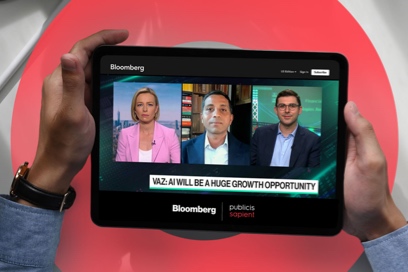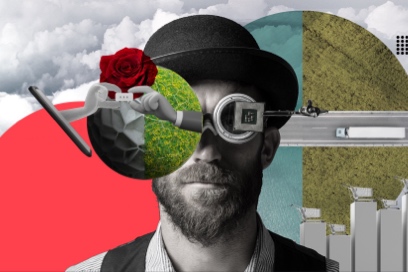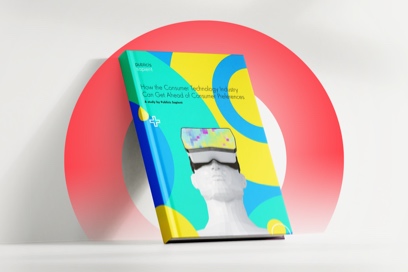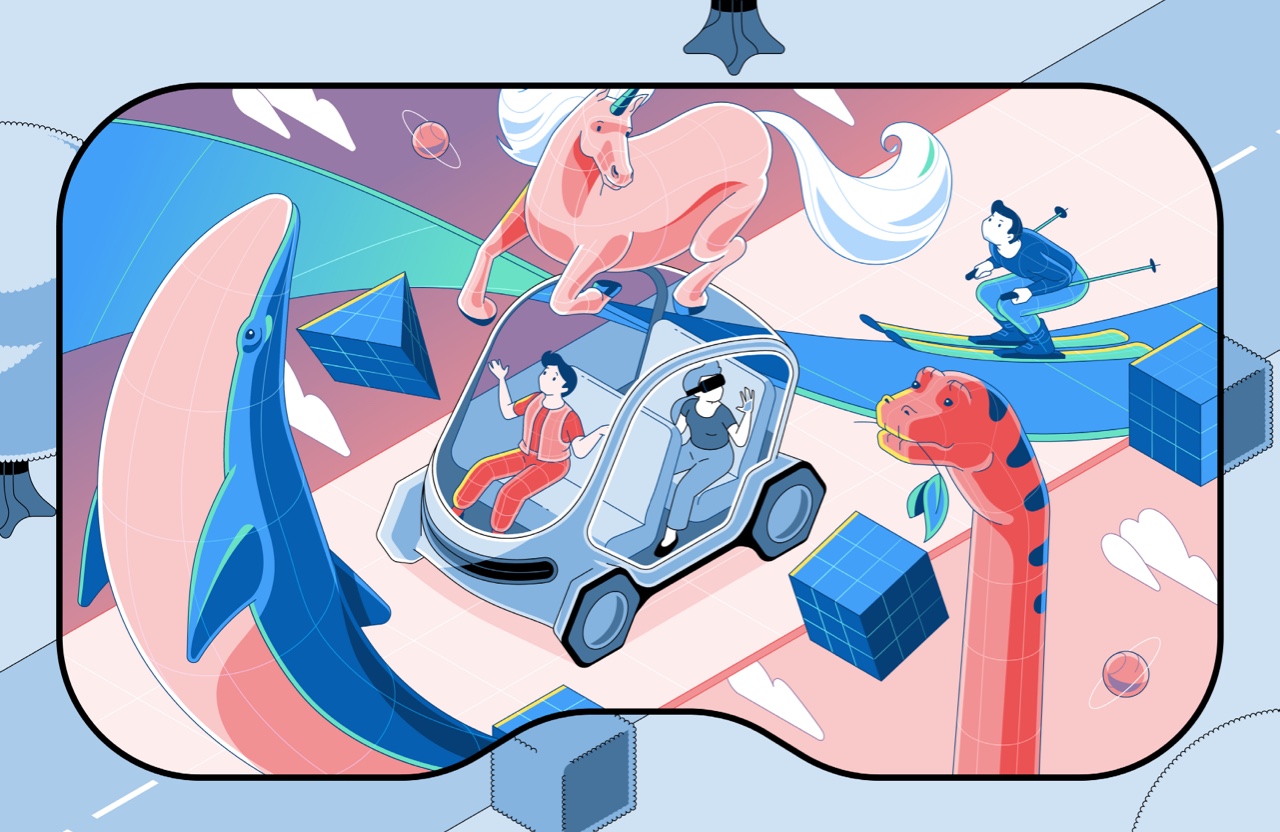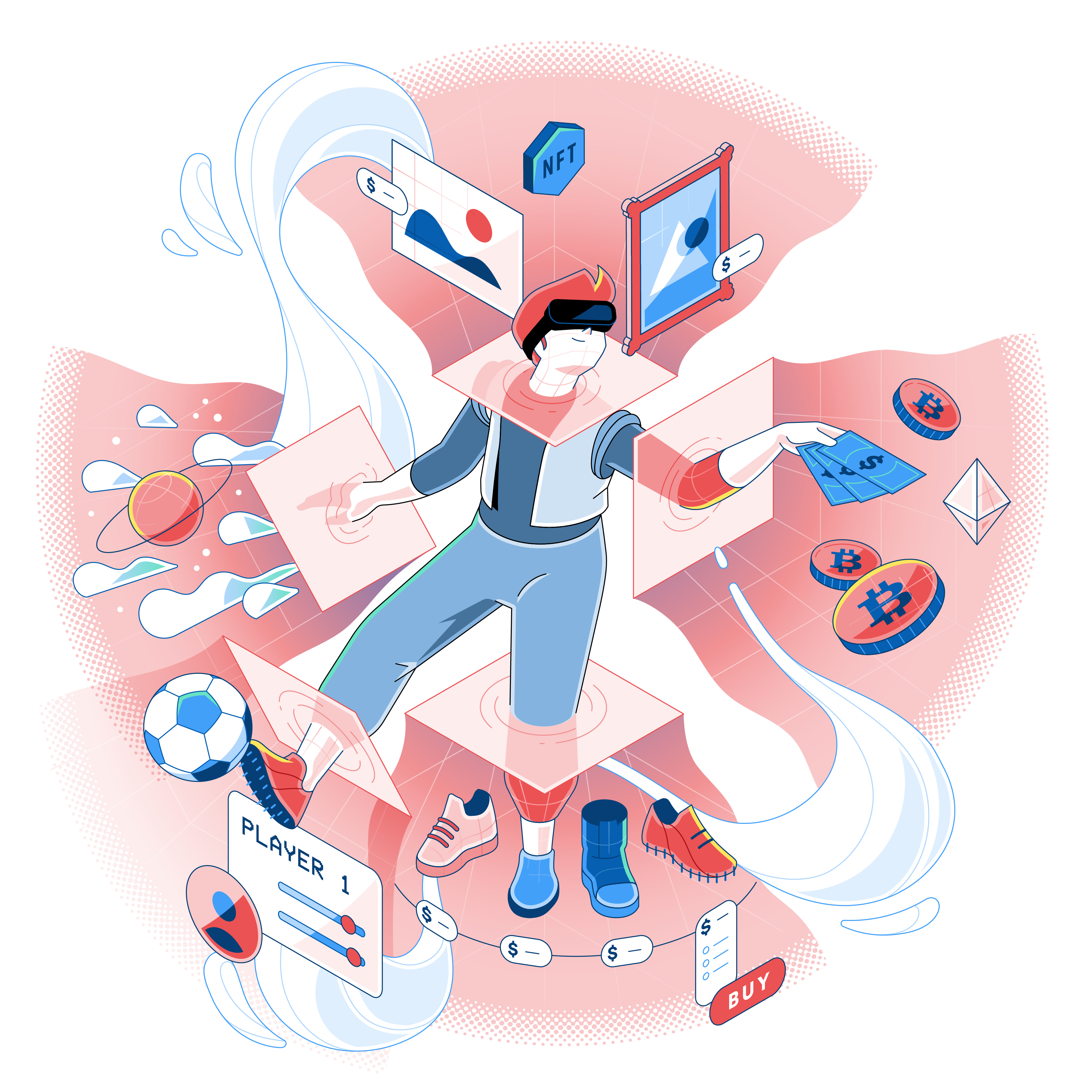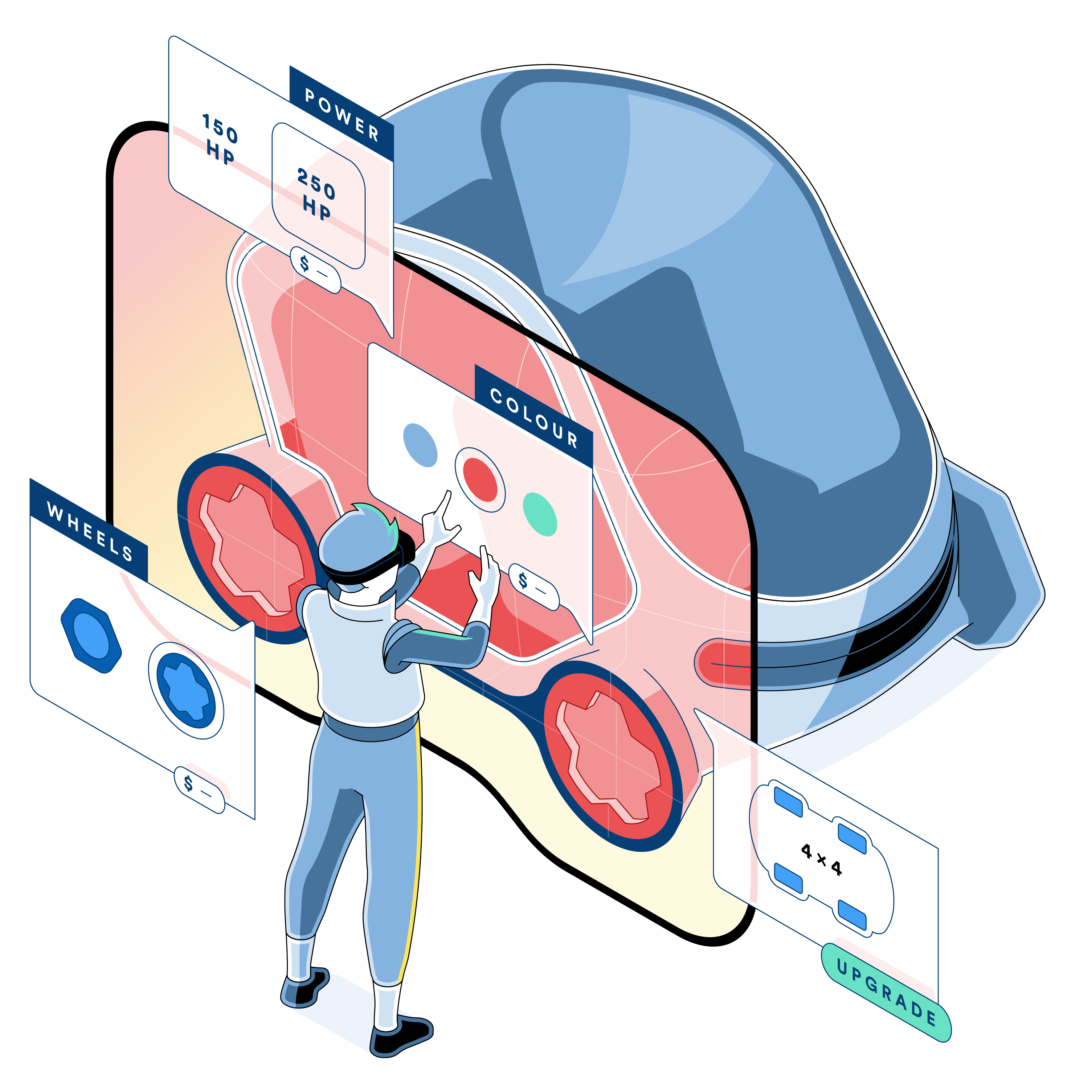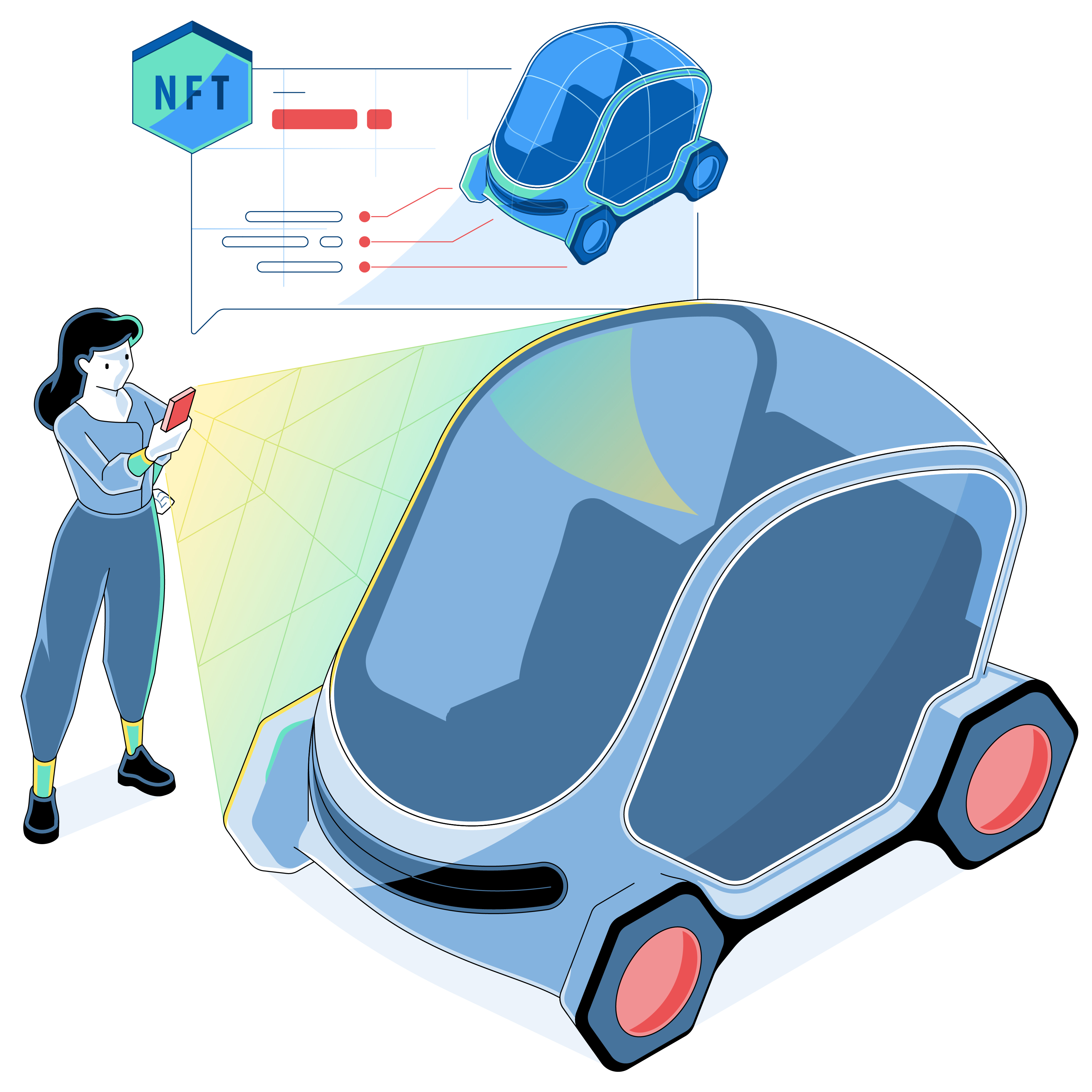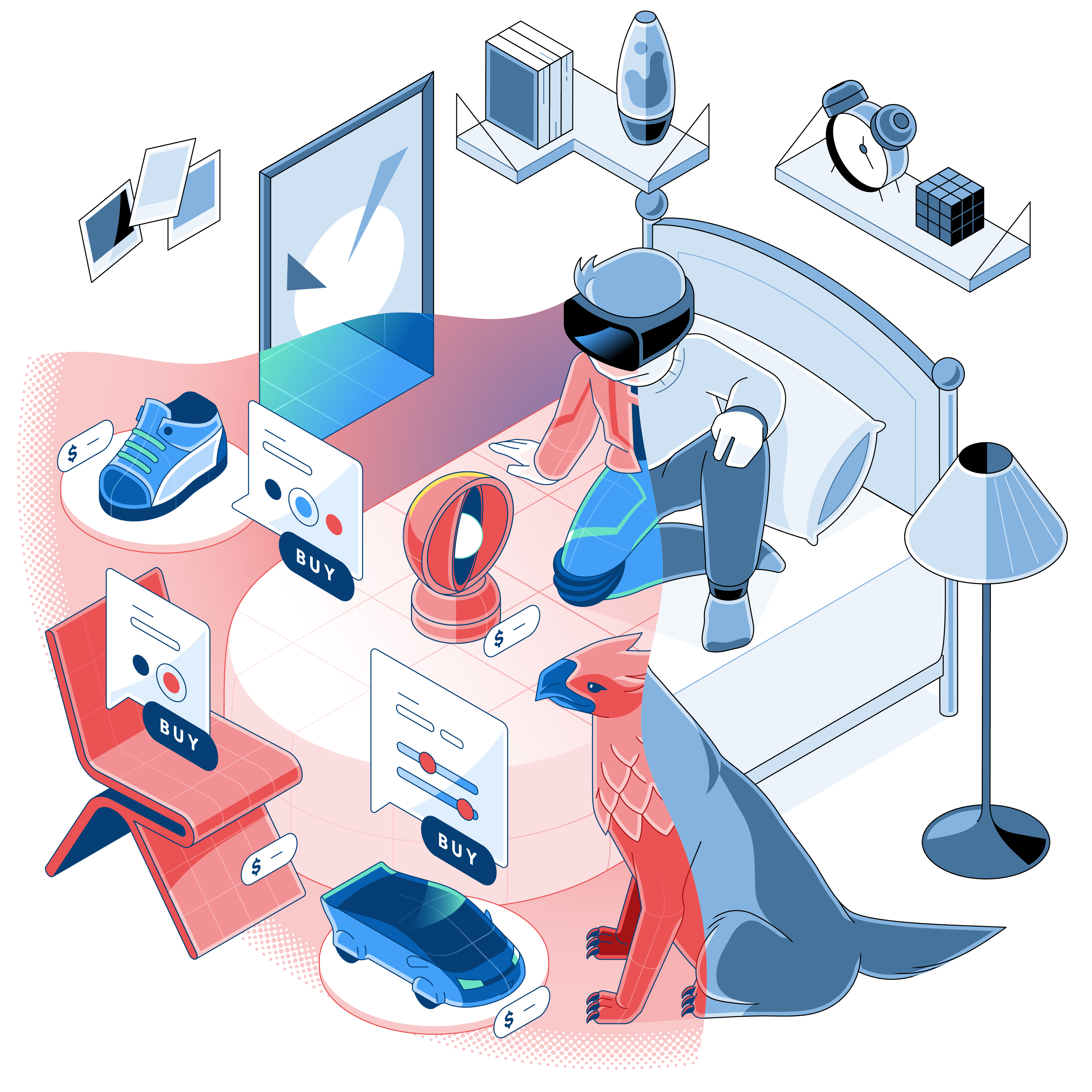The sun is out and the sky is blue, but that’s the only normal thing about the view from the car window. On the other side of the road, giant animals are speeding past in magenta buggies. Overhead, trees are floating high in the air on little rocky islands. As the car pulls up at a pedestrian crossing, a flock of blue and white chickens bounce across in front of you.
But the most unusual thing of all? For all the otherworldliness, you’re in a real vehicle that’s driving on real roads.
This vision of the future of in-car entertainment has been created by the German company Holoride, a spin-off from Audi. Its technology provides car passengers with entertainment experiences through virtual reality (VR) and augmented reality (AR) headsets. These experiences, which might be games or perhaps artistic reinventions of the world around you, respond in real time to the vehicle’s speed, steering and location data. This synchronisation makes those virtual experiences more immersive.
Certain Audi models now rolling off the production line are Holoride-compatible. To some commentators, it is not just a glimpse of a new optional extra. It is a glimpse of the metaverse.
The word “metaverse” seems to have dominated tech discourse for the past year – and gone through a whole hype cycle in that time. If you find it hard to unpick precisely what it means, that’s because it does not have a precise meaning. But broadly speaking, it refers to an emerging class of virtual experiences. Perhaps these are VR, or perhaps these combine the digital and physical worlds using AR. Or maybe these experiences take place in the kinds of virtual worlds we are already used to experiencing via our smartphones and game consoles. It depends on who you ask. But right now, tech companies are battling for their particular definition to win out.
One of the reasons this battle is raging so hard is that these digital realms are potentially places for users to go shopping, participate in marketing experiences, own virtual property, make things, work, play games and socialise. In other words, there is money to be made.
Some think the scale of this business opportunity is colossal. The most evangelical proponents of the metaverse are still beating the drum for a particularly radical vision. They believe that the virtual experiences emerging today – experiences of the kind Holoride is making – will eventually meld together into an interoperable network. They speculate that these worlds will be able to accommodate unlimited numbers of users and that they will be persistent, meaning they will continue to exist even when you are not using them. In their eyes, this will be the true ‘metaverse’ – the virtual worlds we have now are merely ‘proto-metaverses’ – and it will constitute nothing less than the next version of the web.
This is the bull case, and it says that the experience of this next iteration of online life will be 3D. Its applications, interfaces and mass-market hardware will recalibrate themselves around this paradigm, and you will be able to move seamlessly between the connected virtual worlds that make up the “metaverse” taking your virtual possessions, your virtual finances and your virtual identity with you.
